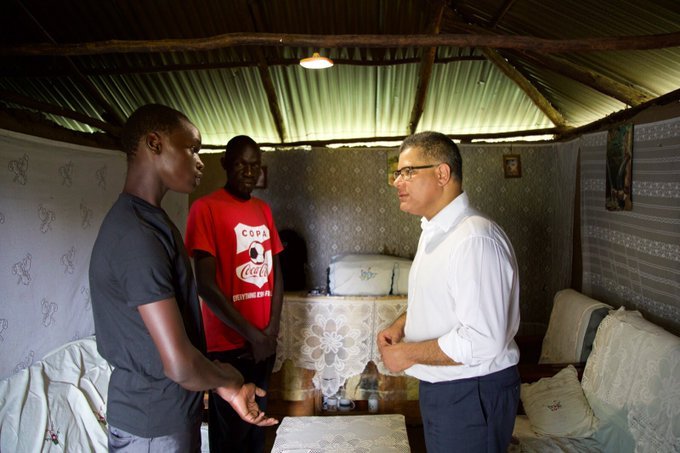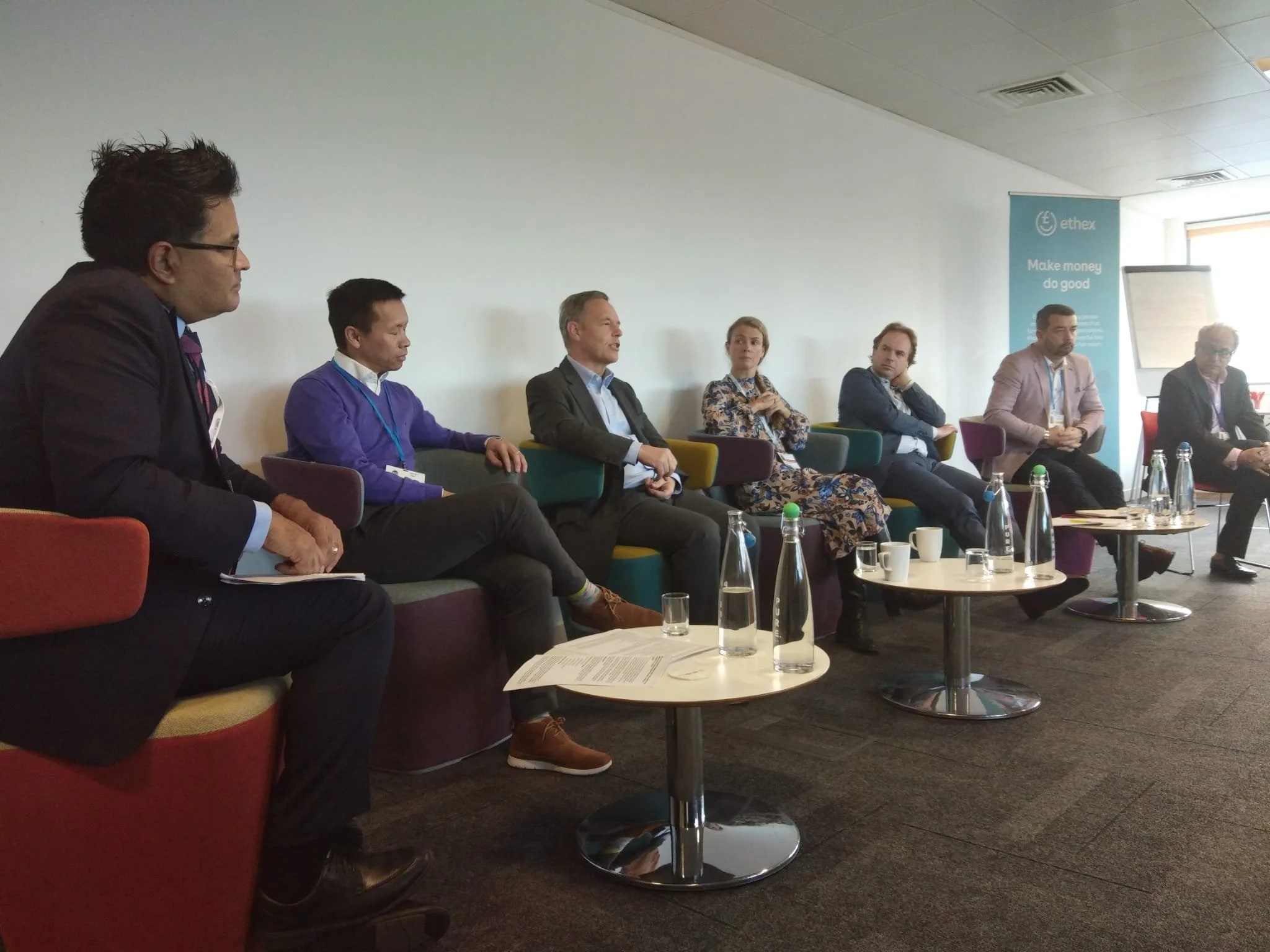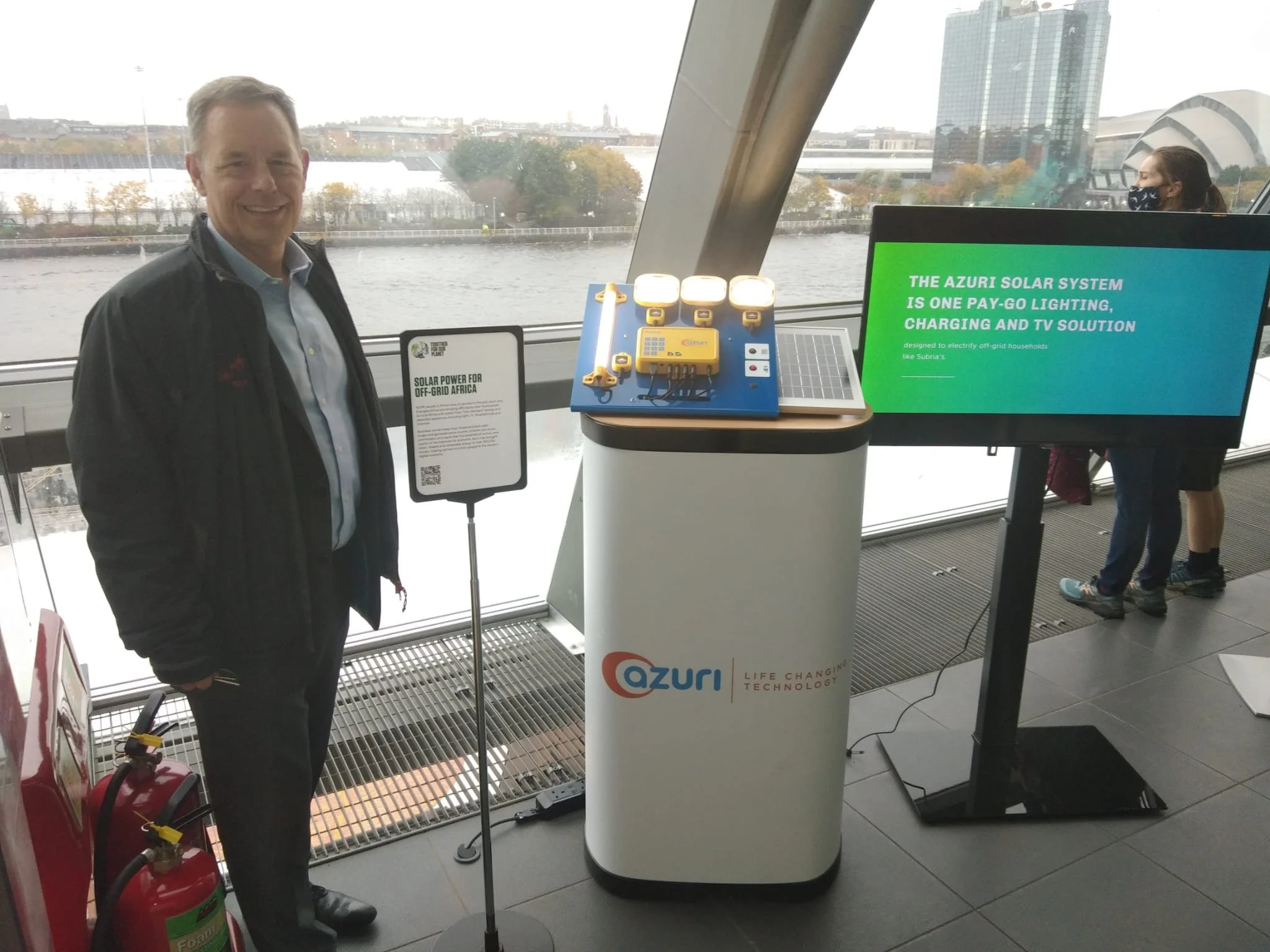CEO Blog: Reflections on COP26
Azuri CEO Simon Bransfield-Garth reflects on the events, discussions and learnings from COP26 in Glasgow, giving his view on what it all means and where to go from here.
In the days after COP26 and as 40,000 people from around the world headed home, the overarching sentiment was one of “mind the gap”. Undoubtedly, COP26 has moved us forwards – the agreements on methane and deforestation for example – but it also highlighted the many gaps that remain to be bridged. Not just the historical gap between promises and delivery but also the gap between the few decision-makers and the rest of society, between the views of young and old and between wealthy and developing nations.
But amongst the geopolitics, there were many encouraging examples of specific tangible activities that are having an impact. Many of these will not, of themselves, make a material difference to global greenhouse gasses. But at the same time, it’s the message sent by these projects that is able to inspire and drive a generation. A project that reduces the carbon emissions of a coal power station by 3.75% is hardly going to drive a groundswell of excitement, even though it would make a significant difference to carbon emissions, but the sight of thousands of solar powered tuk-tuks (3 wheeler taxis) in Bangalore just might.
And that is part of the point. While Governments (rightly) focus on decarbonising the major polluters such as power generation, transportation and food using a top-down approach, the activities remain largely out of sight to the mass population. On the flip side, campaigners rightly complain that microscopic changes to behaviour such as reusable cups in coffee shops, whilst a welcome culture shift, will not move the needle at all.
COP26 President Alok Sharma (right) opened the conference with memories of meeting Neville (left) in 2020, a then 19-year-old man using Azuri solar products to help him study for his university degree. Read more here.
Great side event with Ethex and Energise Africa to discuss the role of crowdfunding in fast ground-level impact and how to mobilise people power to make a real difference.
One area where individual power is having an impact is clean financing. Our partners at Ethex and Lendahand were awarded by the UNFCCC for their crowdfunding activities, bringing private capital to bear directly on climate positive solutions. Repurposing private capital is one of the most positive steps that individuals can make to climate mitigation, enabling ordinary money to do extraordinary things. The crowd financing sector is currently worth over 12 $Bn and is forecast to double by 2027. Unlike common “offset” projects that frequently bank, at best optimistic estimates of the carbon saved, programs in emerging economies can point directly to the carbon emissions that are saved, for example by introducing efficient cookstoves to reduce the burning of wood for cooking.
The African continent has the fastest growing population on the planet and African countries have many of the fastest growing economies. Over half the population has no access to mains power and this lack of infrastructure creates openings for new technologies that don’t exist in other countries. For example, solar power in Europe or the US has to compete with a mature commoditised electricity supply industry that has driven down prices over many years. But in many African countries, where grid infrastructure does not stretch beyond the major cities, it is already cheaper to provide distributed solar power at the household level than it is to connect the customer to the grid.
The massive growth in small home solar power in the last decade has brought millions of households into the digital economy, providing not just electric light but also power for TV, smartphones and internet access. While most economies are focusing on decarbonising what they are currently doing, many African households have the opportunity to largely skip the fossil fuel phase and go straight to renewables. Not only does this provide cheap, reliable power for the household, it sets a path of progressively expanding the available power over time and building a new industry of distributed household power.
More importantly, the energy and corresponding appliances allow off-grid consumers to play a full part in the digital economy. Twitter and Whatsapp don’t differentiate between where you live, and just as the lack of the grid has enabled the rise of alternative solar power, so the relative lack of physical infrastructure such as banks has already driven the massive uptake in alternative technologies such as mobile money.
Interactive breakfast briefing bringing together decision makers, industry leaders and big-picture thinkers with prospective everyday-investors to talk about how blended finance can make a real difference to on-the-ground activities.
Azuri and Energise Africa had a front-row seat in the Green Zone, introducing PayGo solar to everyone in the Glasgow Science Centre.
Today, most off-grid households have limited access to the Internet, almost exclusively over mobile phones. Wider access to digital services are a low cost way to extend services to dispersed communities, providing such things as accurate weather forecasts to support smallholders, digital marketplaces, micro insurance products and e-health services.
This bottom-up approach to energy and empowerment also leverages the largest asset of the continent – a massive supply of young working-age individuals. Digital solutions have the ability to bring huge productivity improvements at the grass roots level, enabling communities to become more productive. For example, a motorcycle taxi driver will spend much of the day waiting for customers. A motorcycle taxi driver with a smartphone and Uber (or similar) is able to hugely increase productivity and therefore household income.
Underpinning this is the technology wave of lower cost solar panels and battery storage. 10 years ago, when Azuri started, a distributed power system comprised essentially a solar powered torch. Today, it is possible to routinely get a household system providing a 32” TV and satellite service. And in 5 years time, systems of a similar cost will be able to power devices such as fridges and other mainstream household appliances. We see some evidence of this today in Nigeria, where household solar power is able to largely replace the petrol generators that are used to back up the highly intermittent grid. It’s not a huge stretch to see how technologies such as these, in time, will become mainstream in all homes in the world, even where the grid is plentiful and reliable.
So the climate crisis enables households not only to decarbonise but to completely rethink how basic services such as power but also banking, education and health are delivered. The first instances of these cutting-edge technologies are appearing in some of the most unlikely places – not just in urban California with self-driving electric cars, but also in off-grid households in rural Africa. Both of these groups of pioneers are, in different ways, adopting technology because it works and because it not only fills a space that is lacking in existing infrastructure but also because it is becoming the new normal, making traditional infrastructure in many cases redundant. With the right commercial financing and support it is possible to step over the gap and join the new sustainable economy. With the right backing, convenient and functional sustainability can be a ‘first choice’: rather than fossil fuels being the ‘default’ and sustainability the ‘fix’, rural Africa is setting the bar higher and demanding the benefit of renewable energy standards of living from the outset.






